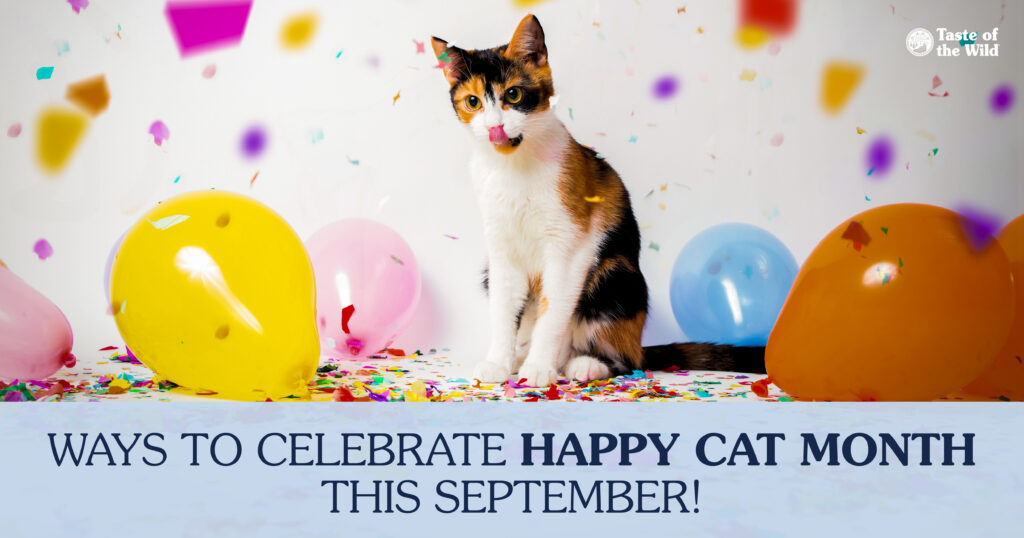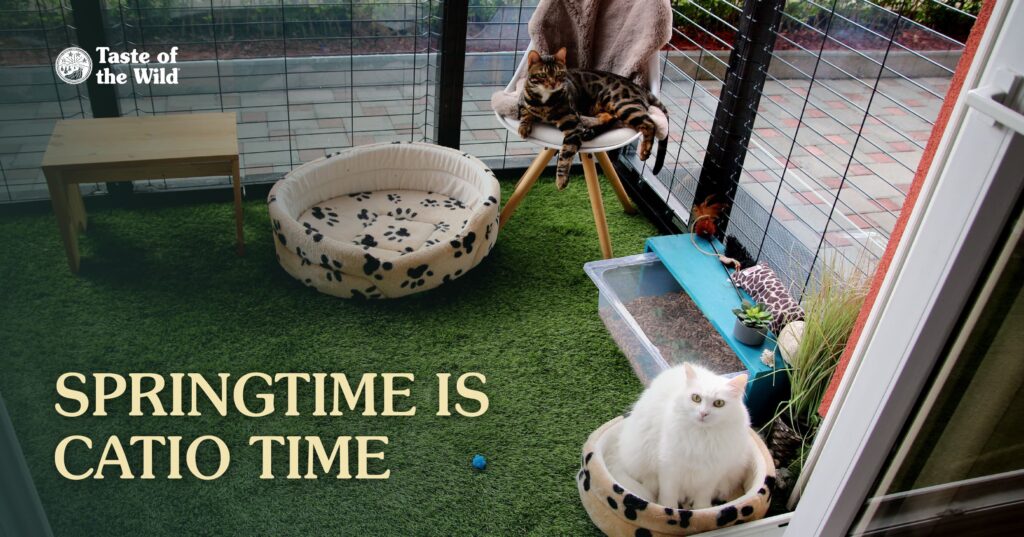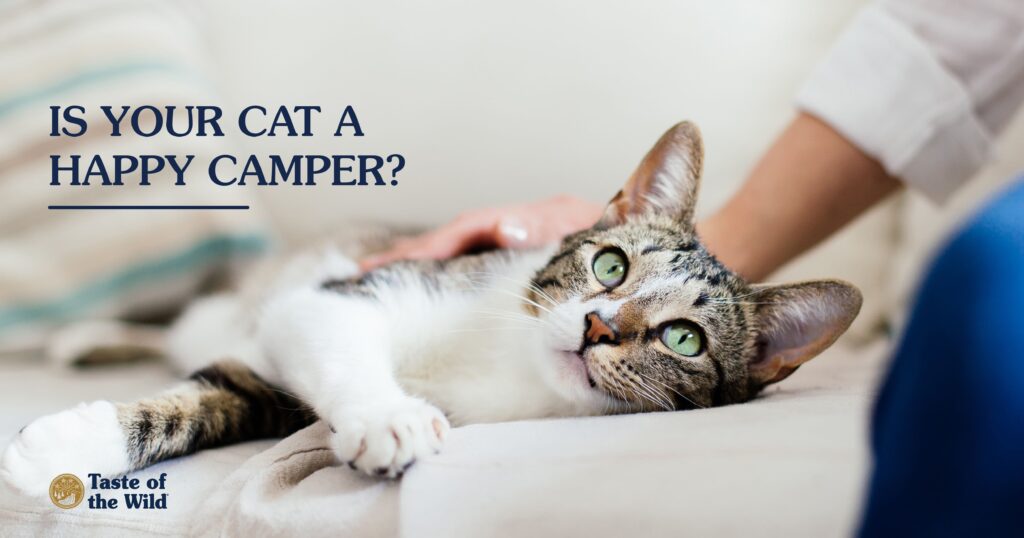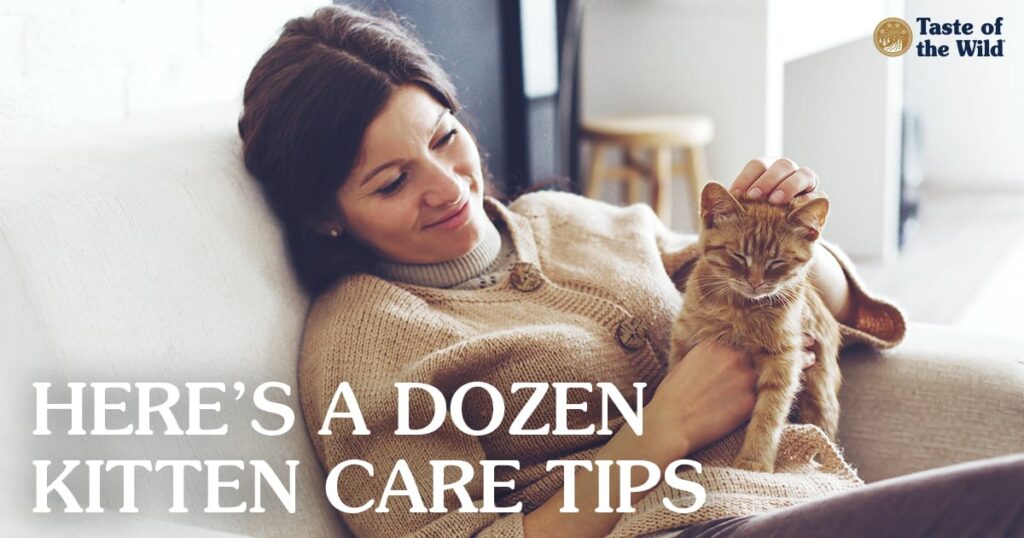
Happy Cat Month, pet owners! Yes, you read that right. September marks the annual Happy Cat Month created by CATalyst Council. This celebratory month was established to spread education about the health, happiness and importance of companion cats. So, keeping this in mind, what ways can you surprise your cat and bring them some extra joy this September?
Quality Time Makes Happy Cats
Cats may seem like independent, quiet creatures, but they appreciate socializing with their humans just as much as dogs do. They’re usually a little less vocal than a doggo about needing attention, but they need it all the same. So, our first surprise for Mittens is to add extra spurts of playtime and cuddles throughout your daily routine. Life can get busy, but cat time can be the purrfect excuse to take a much-needed break. Quality time often improves Mittens’ mental health, which lessens anxiety and destructive behavior. An extra ten to twenty minutes here and there adds up. And according to Pet MD, at least one hour of play a day can increase your cat’s life span. Studies have also shown that cuddling your cat can lower your blood pressure and help fight off loneliness, depression, anxiety and stress. Just make sure Mittens is in the mood for kitty cuddles before going all ham on them.
Throw a Party for Your Cat
Happy cats sometimes call for a cat-themed parties for your toe-beaned friend. If your pet is a more social individual, consider inviting some family and friends over for snacks and showering the cat of the hour with all kinds of attention. Whip up a cat-friendly treat or visit a local pet store for the perfect cupcake-like cat treat to go along with the human foods. Top off the party with photo booth props and an area where attendees can snap some pics with Mittens.
If your pet is not a social butterfly, that’s OK! Pick a day where you and/or your household hosts a tiny party for Mittens. You can still surprise them with some yummy homemade treats and photo opportunities around the house. We’re pawsitive that as long as your pet is partying it up with you, they’ll be a happy camper.
Outdoors Is a Natural Cat Happy Place
Cats who spend time outside are stimulated by all the sights, sounds and smells of nature. Try leash training your cat to take them on short strolls through the backyard. They’ll have new areas to sniff, grass to eat and wildlife to watch. Reach for the flea and tick medicine before taking Mittens outside, though, so you don’t bring any parasites back into your house. One way to make your feline unhappy is dealing with literal blood suckers.
Another way to get your cat outdoors and enjoying the fresh air is with the help of a pet tent or a catio. Pet tents can be found at local pet stores or online. This portable option can be set up anywhere outside (or inside). It can be stocked with a water bowl, toys and other comfort items, too, to help Mittens enjoy their time lying in a collapsible shelter outdoors. We recommend setting up the tent indoors first, to help your cat get acquainted with the new item prior to its outdoor use.
An upgrade from a pet tent is a catio. This option is less portable but could offer your pet more space to climb and crawl around in. Catios can be ordered online or created from various materials picked up at the local hardware store and thrift shops. It provides your cat with a stable, stationary enclosure anywhere in the yard. They’re often weatherproofed and can be fitted with multiple shelves, cat hammocks and cat huts. We’re sure Mittens is happy just envisioning this possibility!
Planting Catnip and Cat Grass
Continuing with the nature theme, bring a little outdoors inside for Mittens. Consider planting pots of catnip and cat grass near your cat’s favorite window. Both plants are feline favorites!
Cat grass may look like grass from your backyard, but rest assured it’s not! It’s typically grown from rye, barley, oat, wheat or alfalfa seeds. Cat grass provides your favorite feline with antioxidants, chlorophyll, vitamins and additional nutrients that promote overall gut and immune health. It also aids in removing hairballs and enhances mental stimulation. Cat grass can be found online or at a local pet store.
Catnip plants are a member of the mint family. You can add catnip to a homemade recipe or give it to them raw as a treat. This plant can help reduce anxiety and enhance positive associations to objects, events or locations. Because of its holistic calming effect, some veterinarians recommend catnip when anxious pets must travel. When cats come into contact with the catnip plant, they’ll likely roll around, show increased affection or may play-bite. Do not be alarmed — they’re just showing you how happy they are with their new catnip.
Dental Toys Make a Healthy and Happy Cat
Who doesn’t love a new toy? And when a new cat toy can double as a way to better your cat’s health, it’s a win-win! Add cat dental toys to the lineup of surprises to upgrade your cat’s hygiene habits. From catnip sticks to wiggle worm (plastic) chew toys, there’s a wide array of options at your local pet store or online.
Now, it’s important to note that cat dental toys do not replace a vet visit and teeth cleaning, but they do freshen your pet’s teeth as they play and chew. Cat dental toys can also keep your pet mentally stimulated as they gnaw on something throughout the day. We think Mittens will be delighted to maintain their mouth health and get a new toy to play with.
Ensure Optimal Health for a Happy Cat
Now a surprise Mittens might not be expecting is an annual vet checkup. But it’s worth adding to your September to-do list. By taking your favorite feline in for an annual checkup, you can catch any potential issues early (cats are notorious for hiding pain or discomfort), and this will save money in the long run. Surprise, Mittens! You get to live a healthier, fuller life.
No matter which surprises you choose to bestow upon your furry friend, we’re sure they are going to love the thought and time you put into celebrating this annual holiday. We hope this September enhances the care your cat needs, strengthens the human-feline bond you’ve already established and leads to a lifetime of furry happiness for you both.




